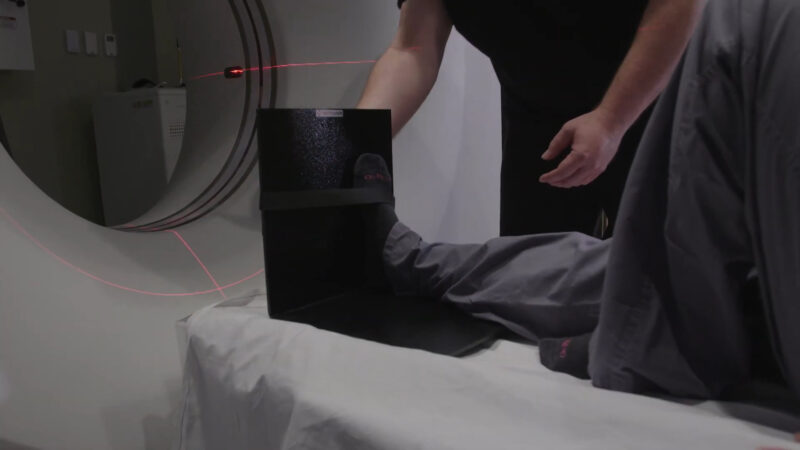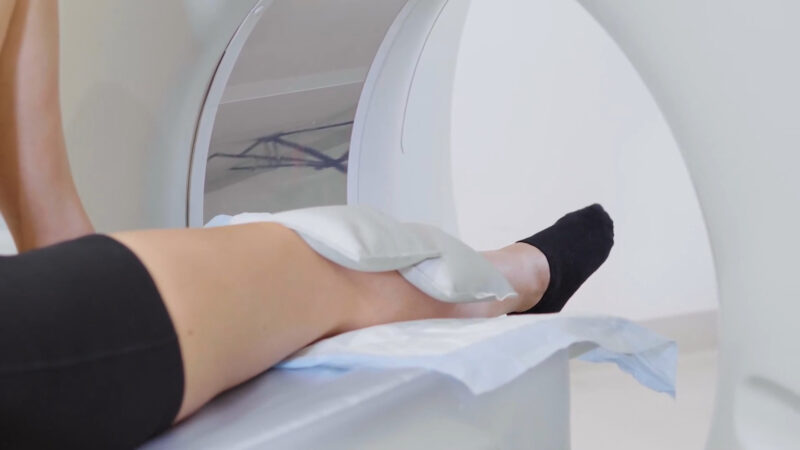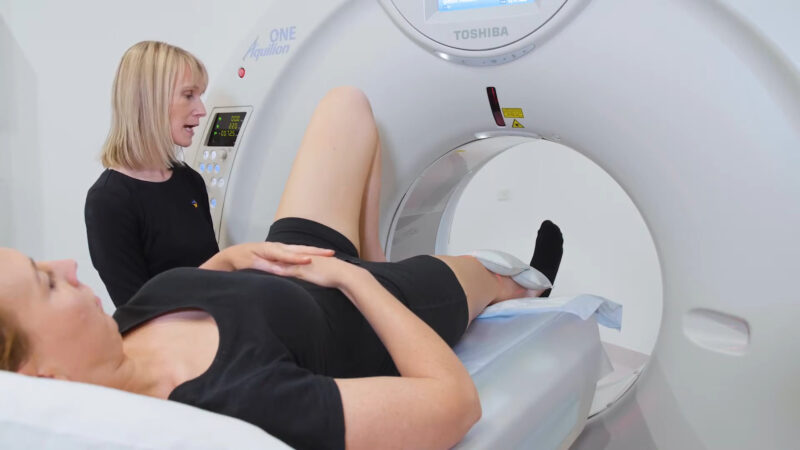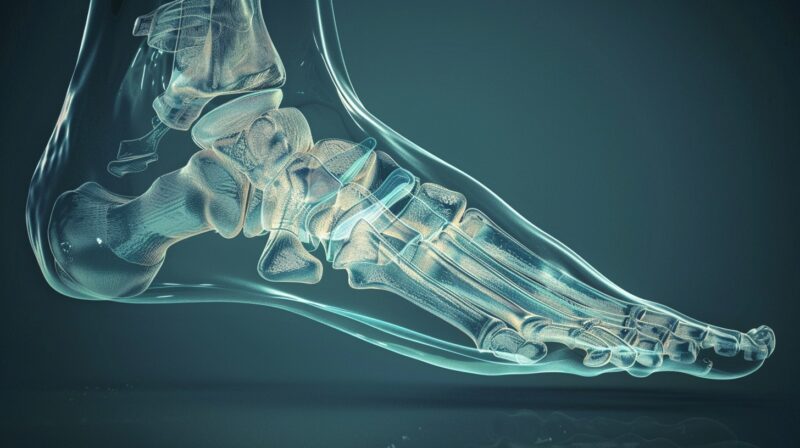Computed Tomography (CT) scans of the foot and ankle provide detailed images that help diagnose various conditions, from fractures and sprains to tumors and infections. Unlike traditional X-rays, CT scans offer a more intricate view of the body’s internal structures, including soft tissues and bony architecture.
This article looks into the reasons for undergoing a foot and ankle CT scan, preparation steps, and the procedure itself.
Key Takeaways
- Detailed Diagnostic Imaging: Foot and Ankle CT scans are crucial for providing intricate images that reveal a wide array of conditions affecting the foot and ankle, including fractures, sprains, tumors, and infections.
- Uncovering Hard-to-Detect Injuries: One of the primary reasons for opting for a CT scan is its unparalleled ability to identify ankle fractures that X-rays might miss.
- Evaluating Soft Tissue Conditions: CT scans stand out in their ability to assess conditions affecting cartilage, ligaments, and muscles, providing essential data for diagnosing conditions such as arthritis and ligament sprains.
- Supporting Oncological Care: In oncology, CT scans serve a critical function by detecting abnormal growths and assisting in cancer staging and biopsy planning.
- Preparation and Procedure: Preparing for a foot and ankle CT scan involves specific steps, including potential fasting and medication adjustments, particularly when intravenous contrast is used.
What Are the Reasons for the Scan?

CT scans are indispensable when it comes to diagnosing ankle fractures that remain elusive on X-rays. The technology’s ability to offer a crystal-clear view of the bone structure makes it possible to rapidly identify any traumatic internal injuries sustained during an accident.
This capability is crucial for emergency assessments, where time is of the essence, ensuring that injuries are promptly and accurately identified for effective treatment.
Exploring Soft Tissue Conditions
The superiority of CT scans lies in their ability to produce detailed images that bring to light conditions affecting cartilage, ligaments, and muscles. Such detailed visualization is essential for diagnosing a range of conditions, from arthritis, which involves joint inflammation and degradation, to sprains that affect the ligaments.
This diagnostic tool stands out for its effectiveness in evaluating soft tissue problems, offering clinicians a deeper understanding of the patient’s condition.
Aiding Oncological Diagnoses and Planning
In the realm of oncology, CT scans are instrumental. They are adept at detecting abnormal growths, such as tumors or lumps, some of which may be hidden deep within the body.
These scans not only help in determining the stage of cancer but are also vital in planning the appropriate approach for biopsies. Furthermore, CT scans are routinely used to monitor how the body responds to treatments, including chemotherapy or radiation, thereby guiding subsequent therapeutic and surgical interventions.
How to Prepare for The Scan?

Patients are encouraged to communicate with the radiology department well ahead of their scheduled scan. This dialogue is crucial for clarifying any specific preparation instructions, which may include fasting or the adjusted intake of medications.
The Role of Intravenous Contrast
The decision to use intravenous contrast hinges on the specific goals of the scan. When contrast is necessary, patients must verify their kidney function through recent blood tests, ensuring their bodies can safely process the contrast material.
Additionally, pregnant patients must disclose their condition to avoid any potential risks to their unborn child.
What Is the Procedure Like?

For scans requiring contrast, a cannula is carefully inserted into the patient’s arm. This contrast dye is pivotal in enhancing the visibility of blood vessels and other structures, offering a more comprehensive view of the area being examined.
Scans Without Contrast
When a scan does not necessitate contrast, the procedure is notably more straightforward. Patients simply lie on the examination bed, which then moves through the CT scanner.
The scanner captures a series of images, providing a detailed view of the foot and ankle without the need for contrast injection.
Post-Scan Protocol
Following the acquisition of the necessary images, the examination concludes. For patients who receive contrast, the cannula is removed before they leave the facility.
Those who underwent a non-contrast scan can typically leave immediately, resuming their normal activities without delay.
FAQ
How long does a foot and ankle CT scan typically take?
A foot and ankle CT scan usually takes between 10 to 30 minutes, depending on the complexity of the area being scanned and whether intravenous contrast is used.
Can I eat before a foot and ankle CT scan?
If your CT scan requires intravenous contrast, you might need to fast for a few hours before the scan. However, if no contrast is needed, eating is generally allowed. Always follow the specific instructions provided by the radiology department.
Is there any risk involved in getting a foot and ankle CT scan?
CT scans involve exposure to a small amount of radiation, which carries a minimal risk. The use of contrast dye can also pose risks, particularly for individuals with kidney problems or allergies to the dye. However, the benefits of accurate diagnosis usually outweigh these risks.
Will I need someone to drive me home after the scan?
If your CT scan does not involve sedation or if you did not receive contrast that causes drowsiness, you should be able to drive yourself home. However, if you feel unwell or if sedation was used, arranging for someone to drive you home is advisable.
How soon after the foot and ankle CT scan can I expect results?
The timing for results can vary, but typically, preliminary results may be available within a few hours to a day. However, a detailed analysis by a radiologist may take a few days. Your doctor will inform you when the results are ready and discuss them with you.
Is a foot and ankle CT scan covered by insurance?
Most health insurance plans cover CT scans that are medically necessary. However, coverage can vary depending on your specific policy and whether the scan is performed as part of diagnostic testing or treatment planning. It’s best to check with your insurance provider beforehand to understand your coverage and any potential out-of-pocket costs.
Bottom Line
CT scans of the foot and ankle are powerful tools in modern medicine, offering detailed insights into the complex structures of the lower extremities. By understanding the reasons for these scans, how to prepare, and what the procedure entails, patients can approach their examinations with confidence and clarity.
If you are interested in finding out more about sinus infections, the use of nasal spray as a treatment option should be considered in consultation with a healthcare provider to ensure it’s appropriate for your specific condition.
